
Fire Information and Updates
Riding Mountain National Park
Current fire danger
![]() Low
Low
The first national park wardens were hired in 1909 — mainly to put out fires. This early view of fire created an imbalance in the park’s forests and grasslands. Parks Canada today works to sustain fire-dependent ecosystems while providing fire protection. The safety of people, protection of property and neighbouring lands is always the first priority.
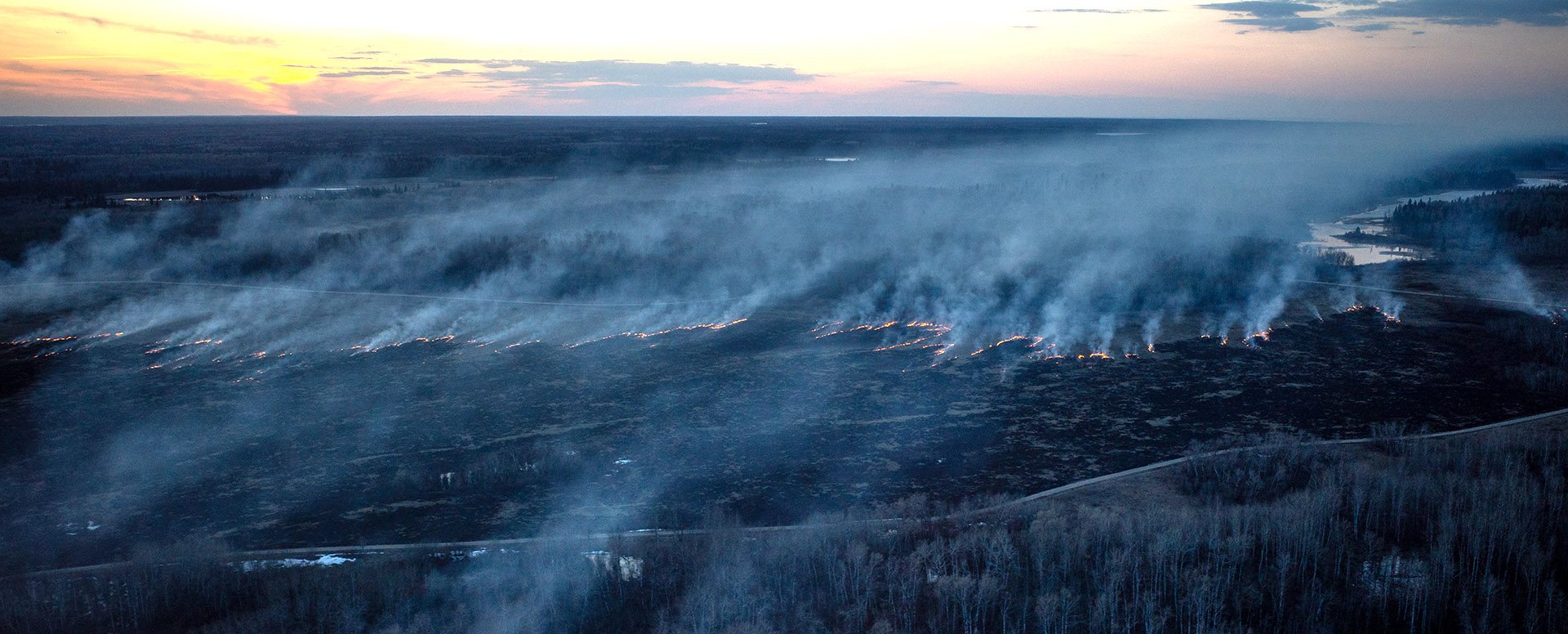
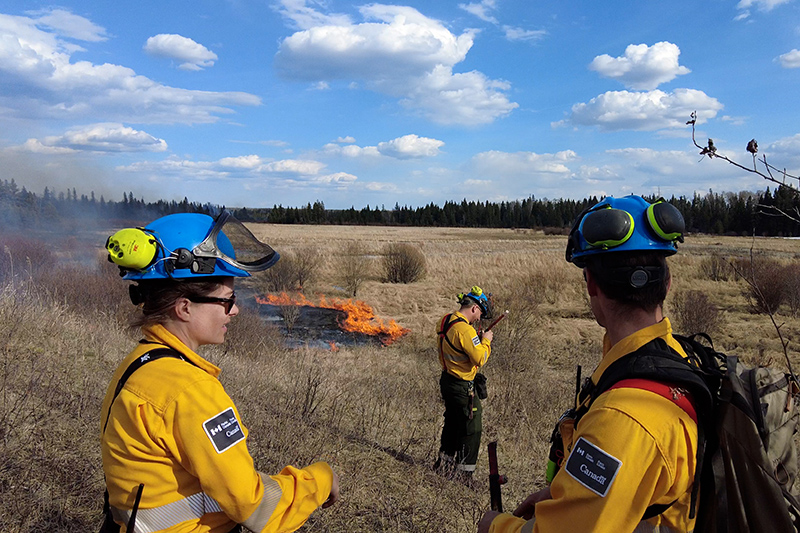
Fire is a natural, essential part of the ecosystems found in Riding Mountain National Park. Fire restores and maintains the health of the environment while providing many benefits.
Fire creates openings in the boreal forest for the sun to reach the forest floor and stimulates growth from seeds and roots. Dead and decaying plant and tree matter becomes mineral-rich ash and converts nutrients for new plant life to grow. Fire renews and restores grasslands by pushing back the spread of aspen forest into natural grassy areas.
Wildfire Risk Reduction
As part of the Wasagaming Wildfire Risk Reduction Project, forest fuels are modified to reduce wildfire risks to Wasagaming and the surrounding area. The project involves prescribed fire treatments, the removal of spruce plantations, the removal of deadfall and brush, and the expansion of the Wasagaming fire break. As part of this project, fuel loads will be reduced and natural vegetation types will be restored around Wasagaming and Onanole to improve their resistance to wildfires.
What you can do
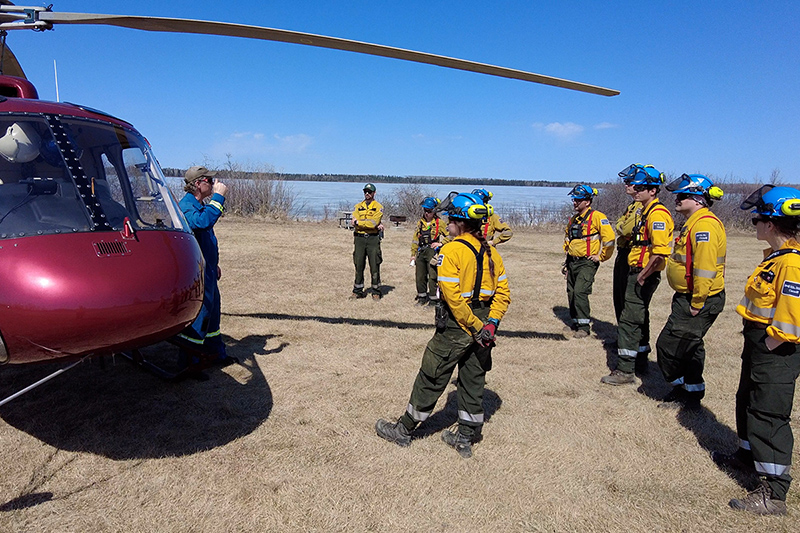
FireSmart is a nationwide program designed to help protect people, property and neighbouring lands from wildfire. Home and business owners can take simple steps to help reduce the risk from potential wildfires. Small actions around a property can help reduce fire spread and improve a home and community’s resilience to wildfire damage.
Learn how to assess property risk from wildfire using the FireSmart program by visiting: www.firesmartcanada.ca.
Campfires
When a fire ban is not in effect, you can safely enjoy a campfire in Riding Mountain National Park by following these guidelines:
- Keep campfires in designated fire pits or boxes only.
- Always attend the fire.
- Use only firewood purchased in the area. Firewood should not be brought in from outside the park but purchased at various providers within the park to prevent the spread of invasive insect species or disease.
- Completely extinguish campfires with water.
Report any wildfires, illegal campfires or suspicious smoke to Parks Canada Emergency Dispatch: 1-877-852-3100
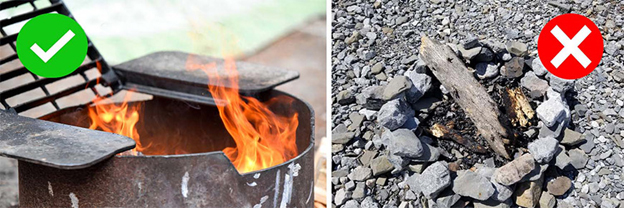
Prescribed Fire
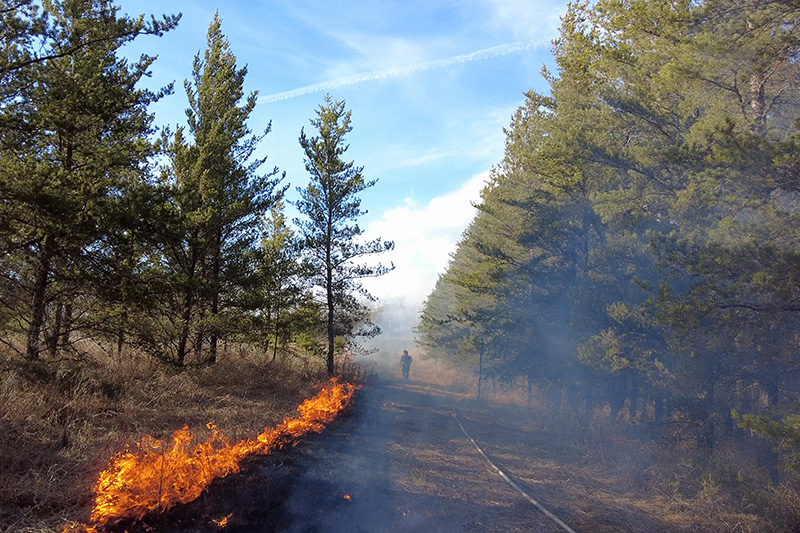
A prescribed fire is a carefully planned and managed fire ignited by trained and experienced fire management personnel. A prescribed fire is used to imitate the low to medium-intensity fires that would naturally and regularly occur in an ecosystem that is adapted to fire. Parks Canada uses prescribed fires to help restore and maintain ecological integrity and biodiversity, promote ecosystem conservation and restoration, reduce the risk of wildfire to nearby communities, and protect cultural heritage.
Prescribed fires lessen the build-up of plant materials that can fuel wildfires. This includes living or dead organic matter such as trees, grasses, leaves, roots, and fallen branches. Removing these plant materials can help to reduce the intensity and severity of wildfires, slows their spread, and makes them easier to control or extinguish.
Menzie Prescribed Fire - Postponed due to unsuitable environmental conditions.
Date: 1–2-week period within October and November 2024 (weather depending)
Location: Area between Whitewater Lake, Gunn Lake and south to the park boundary of Riding Mountain National Park
Size: Prescribed fire will be applied to approximately 1500 hectares of grasslands to form guards (blacklining), and 2000 hectares of aspen and boreal mixed-wood forests later this spring. The plan is that up to 3500 hectares (ha) = 35 square kilometers may be impacted during the prescribed fire.
Additional details: The Menzie prescribed fire will help by maintaining and restoring grasslands, improving forage for elk and deer, modifying the distribution of age groups in boreal mixed-wood forests, and reducing the risk of high-intensity wildfires in Riding Mountain National Park.
Area Closed - Prescribed Fire Operations
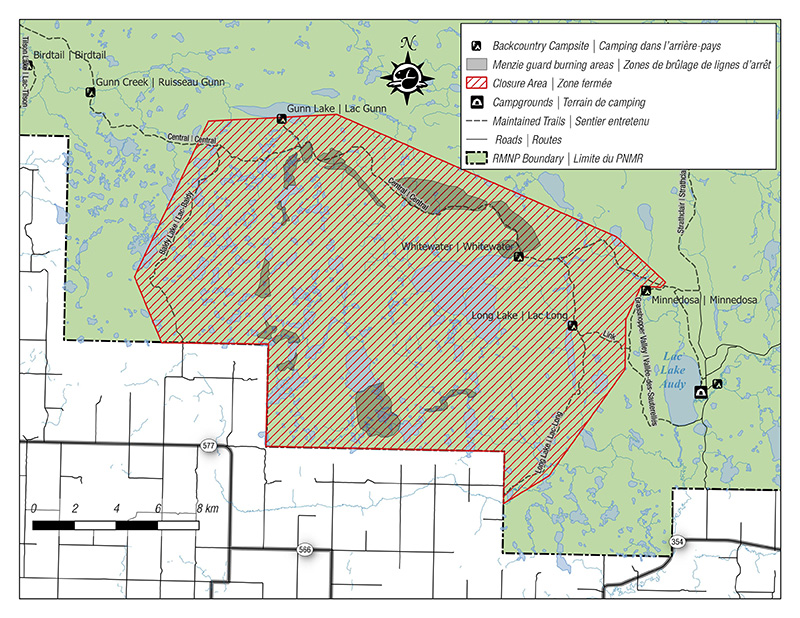
COMPLETED Jackfish Creek Prescribed Fire
Date: April – May 2024
Location: Lake Audy and Strathclair Trail area
Size: Prescribed fire will be applied to 2000 hectares of grasslands and aspen parklands to form guards (blacklining), followed by 2000 hectares of boreal mixed-wood forests later this spring. 4000 hectares (ha) = 40 square kilometers.
Additional details: There are several benefits to the Jackfish Creek prescribed fire in the Lake Audy and Strathclair Trail area, including maintaining and restoring grasslands, improving forage for bison, elk, and deer, modifying the distribution of age groups within boreal mixed wood forests, and reducing the risk of a high-intensity wildfire happening in Riding Mountain National Park.
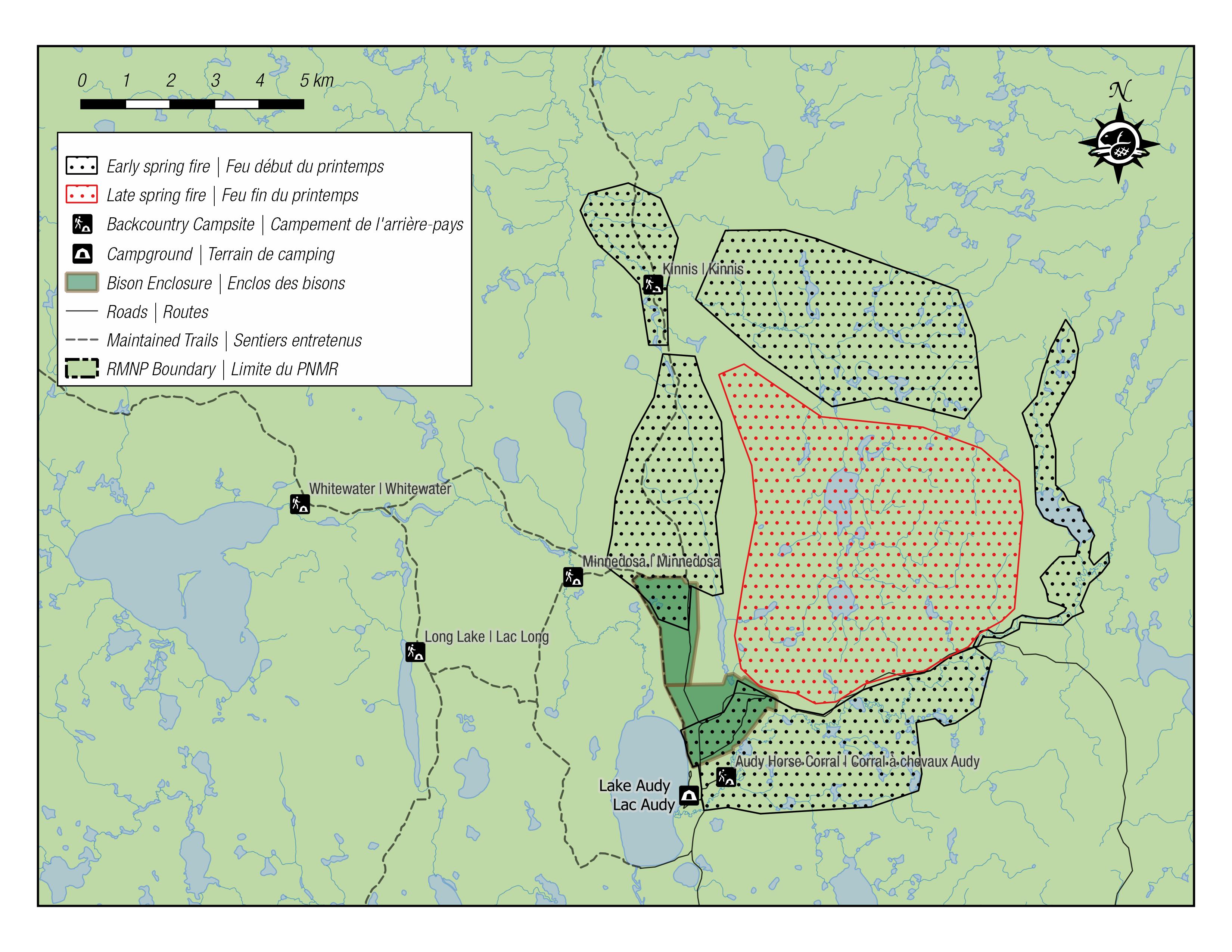
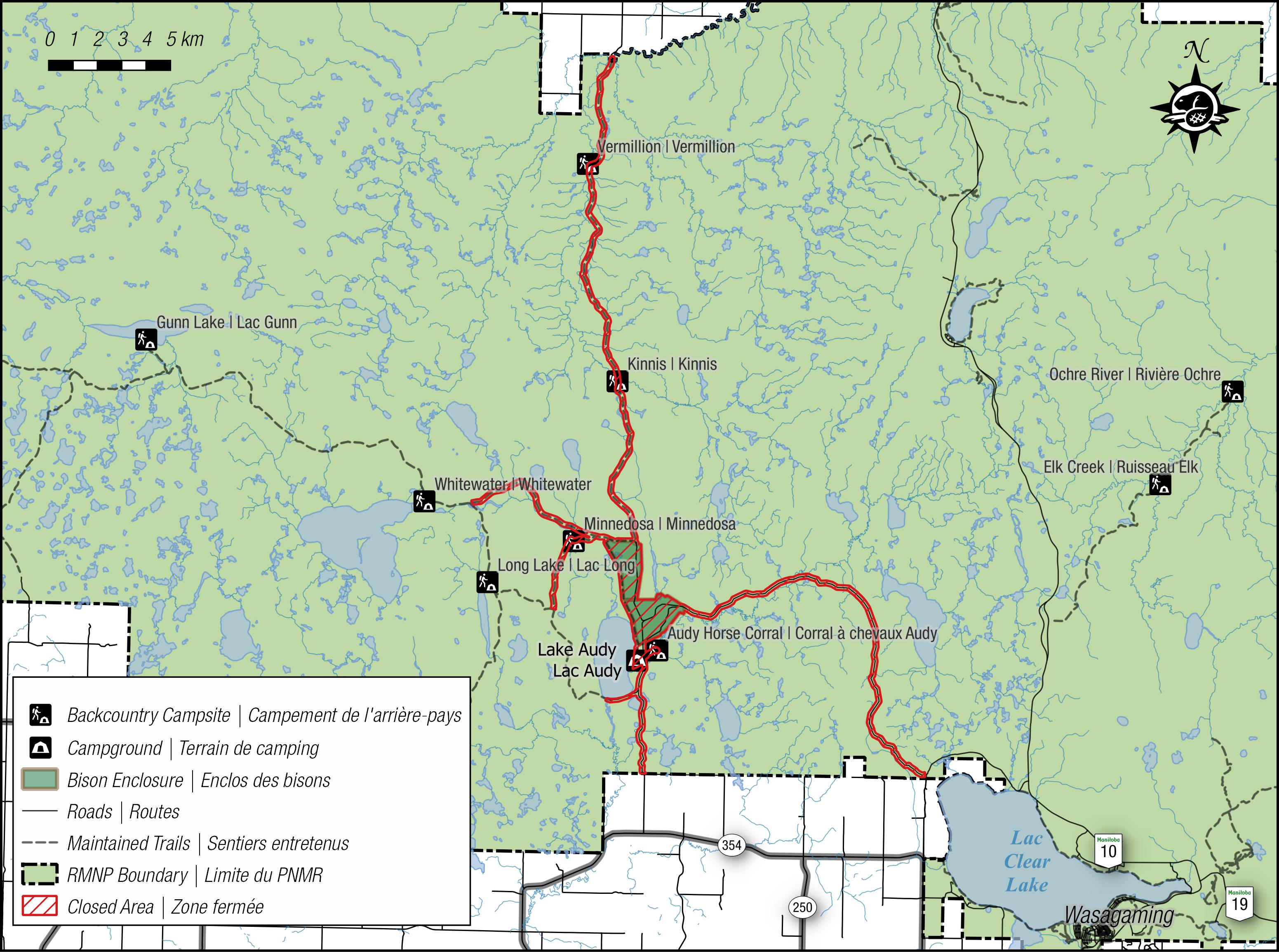
Frequently Asked Questions
Do you have a BURNING question? Search through our Frequently Asked Questions for an answer. Can’t find what you’re looking for? Then ask our experts!
How long will closures for the prescribed fires be in place?
Closures will be in place during active burning operations which will be split into guard burning and main unit burning. The range of time a closure remains in place is highly dependent on weather conditions and could range from one day to a two-week closure. Areas that have been closed will reopen when Fire Specialists determine the area is safe.
Look out for signage and follow our Facebook page for fire information updates: www.facebook.com/RidingNP
For up to date information on trail closures visit: Trail conditions
Is the smoke from the prescribed fire in Riding Mountain National Park expected to be visible or impact roads and highways?
Smoke will be visible while burning is taking place and in the following days, a reduced amount of smoke may be present as crews work on the fire line. Weather conditions and forecasts are monitored, and every effort will be made to make sure the smoke impact for the public is minimal.
What is the guard burning (blacklining)?
Guard burning takes place in grassland areas in the spring or fall when snow or moisture under the forest canopy prevent fire from spreading into the forest. These burned areas act as a fire barrier to prevent spread outside of the burn unit.
To ensure prescribed fires are done safely, what steps does Parks Canada take?
Safety is always Parks Canada’s top priority when planning prescribed fire. At Parks Canada administered places, prescribed fires are planned and managed by well-trained, professional wildland fire management specialists and are only set under specific, pre-determined conditions. Members of Parks Canada’s National Fire Management Program carry out extensive planning and preparation before a prescribed fire is lit, including evaluating the landscape and assessing weather conditions and wind speed.
During a prescribed fire, the team will have firefighting equipment in place to contain the fire within the pre-set boundaries. Helicopters or drones may be used to monitor the fire’s progress. Every prescribed fire plan includes a contingency plan that describes how a potential escape will be managed. For example, some plans may identify a list of additional aircraft, crews, and equipment that would be on standby to assist with control, if required.
After a prescribed fire is completed, how long does Parks Canada usually monitor the site?
Immediately following a prescribed fire, fire management personnel monitor conditions closely. Depending on the location of the prescribed fire, monitoring may be done by in-person observation, remote cameras, drone surveys, or flights over the area with thermal scanners.
Long-term monitoring will also be done. Fire specialists will visit the burn site for many years following a prescribed fire to assess whether the long-term objectives of the burn have been met. Long-term objectives may include habitat creation for wildlife, plant species restoration, and community protection.
How do prescribed fires affect wildlife?
Each prescribed fire planning team does an evaluation that considers impacts on wildlife, including a species at risk assessment. The assessment includes identifying species that are in the area that are sensitive to fire.
Prescribed fires are generally lower in intensity than most wildfires and therefore have fewer impacts on an ecosystem and wildlife. Science shows that lower-severity fires, like prescribed fires, result in lower wildlife deaths. As the fire moves into an area, many animals can flee the area and smaller animals may seek refuge underground. There is the potential that some species may not make it out in time.
Many species of plants begin to sprout quickly, and wildlife species return soon after a fire has passed.
- Date modified :